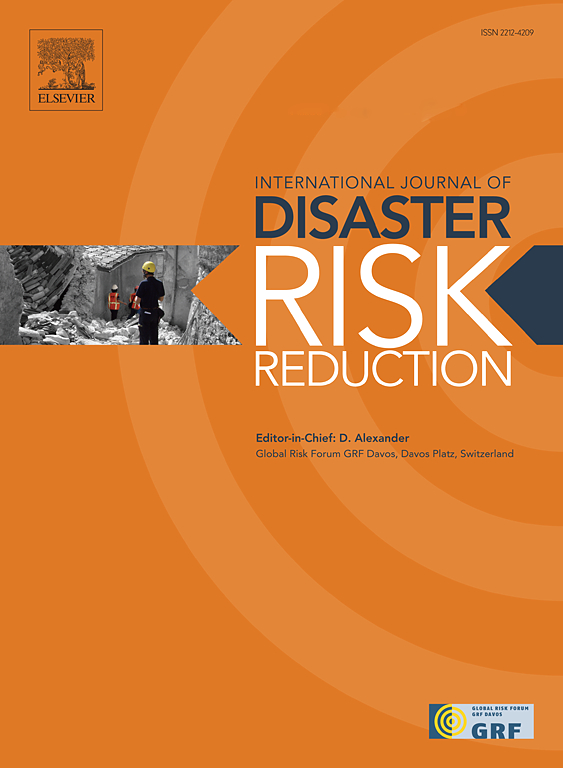Drought impacts and community adaptation: Perspectives on the 2020–2023 drought in East Africa
IF 4.2
1区 地球科学
Q1 GEOSCIENCES, MULTIDISCIPLINARY
International journal of disaster risk reduction
Pub Date : 2025-02-13
DOI:10.1016/j.ijdrr.2025.105309
引用次数: 0
Abstract
The Horn of Africa drylands (HAD) encompassing Kenya, Somalia, and Ethiopia, recently endured an unprecedented multi-year drought from 2020 to 2023, causing devastating impacts. This study investigates these impacts and the dynamics of human adaptation in response to the drought, comparing it to earlier drought events (i.e., 2016–2018) to identify key lessons. First, drought impact data—covering milk production, trekking distances to water sources, and internally displaced persons (IDPs)—are analysed over time to provide a detailed overview of drought dynamics. Second, household survey data (n = 752) are used to examine community perceptions of the drought period and their adaptation strategies. Finally, agent-based modeling (ABM) simulations explore the interactions between mitigation, adaptation decisions, and drought impacts. The results reveal that, on average, the 2020–2023 drought had more severe impacts than the 2016–2018 drought, although the latter exhibited greater variability in impacts. Communities have adopted various adaptation measures to cope with drought effects; however, limited knowledge and financial resources remain significant barriers to scaling these efforts. ABM simulations indicate that enhancing extension services can boost the adoption of adaptation strategies, leading to increased crop and milk production. Additionally, the simulations suggest that water harvesting can mitigate drought impacts upstream, though it may reduce water availability downstream. These findings highlight the critical need for sustained investments in adaptation measures, timely and well-informed decision-making, and region-specific interventions while carefully considering the trade-offs associated with these strategies.
求助全文
约1分钟内获得全文
求助全文
来源期刊

International journal of disaster risk reduction
GEOSCIENCES, MULTIDISCIPLINARYMETEOROLOGY-METEOROLOGY & ATMOSPHERIC SCIENCES
CiteScore
8.70
自引率
18.00%
发文量
688
审稿时长
79 days
期刊介绍:
The International Journal of Disaster Risk Reduction (IJDRR) is the journal for researchers, policymakers and practitioners across diverse disciplines: earth sciences and their implications; environmental sciences; engineering; urban studies; geography; and the social sciences. IJDRR publishes fundamental and applied research, critical reviews, policy papers and case studies with a particular focus on multi-disciplinary research that aims to reduce the impact of natural, technological, social and intentional disasters. IJDRR stimulates exchange of ideas and knowledge transfer on disaster research, mitigation, adaptation, prevention and risk reduction at all geographical scales: local, national and international.
Key topics:-
-multifaceted disaster and cascading disasters
-the development of disaster risk reduction strategies and techniques
-discussion and development of effective warning and educational systems for risk management at all levels
-disasters associated with climate change
-vulnerability analysis and vulnerability trends
-emerging risks
-resilience against disasters.
The journal particularly encourages papers that approach risk from a multi-disciplinary perspective.
 求助内容:
求助内容: 应助结果提醒方式:
应助结果提醒方式:


